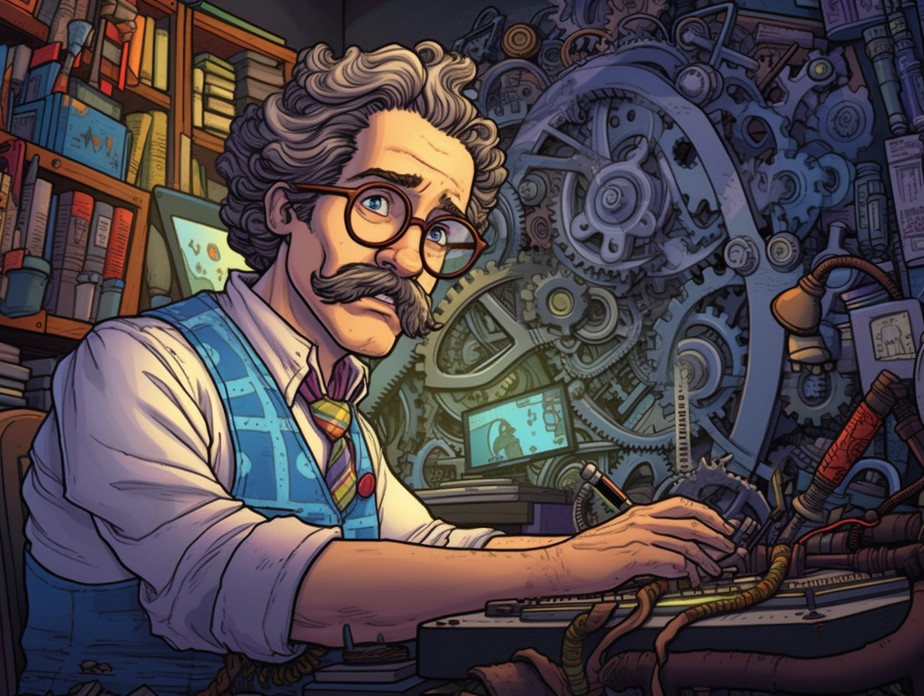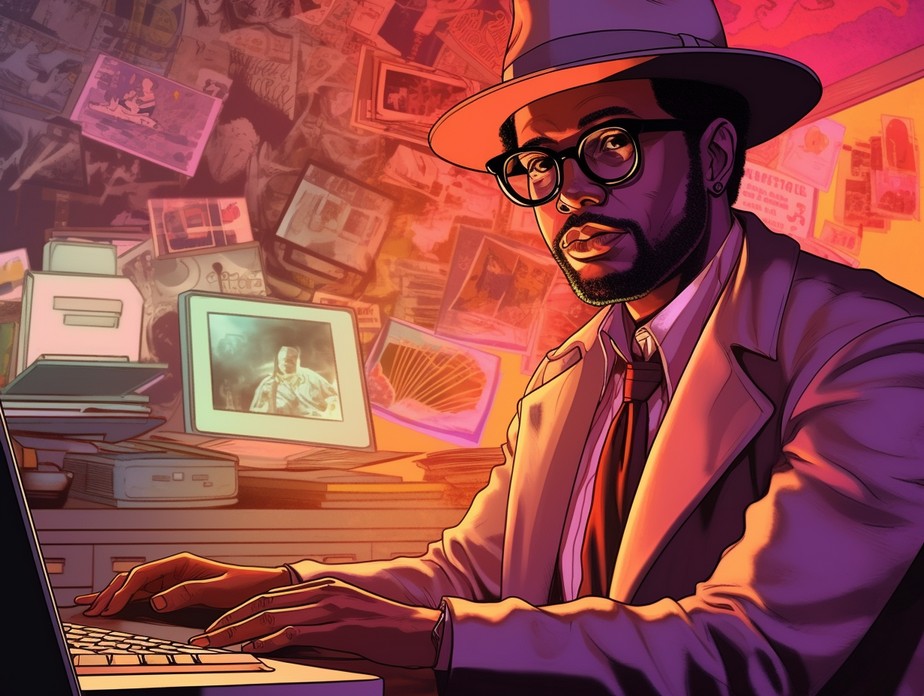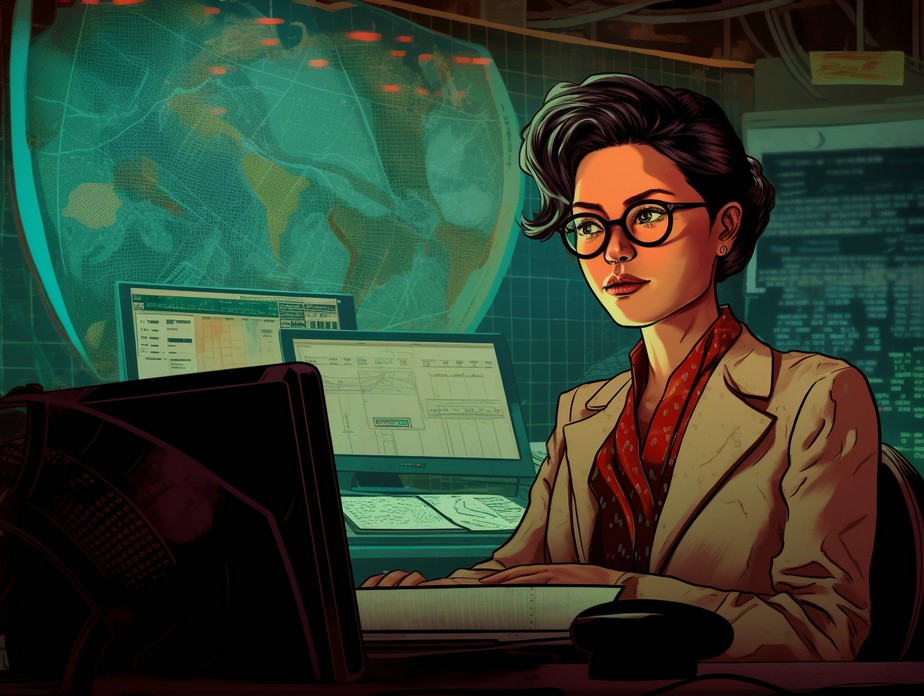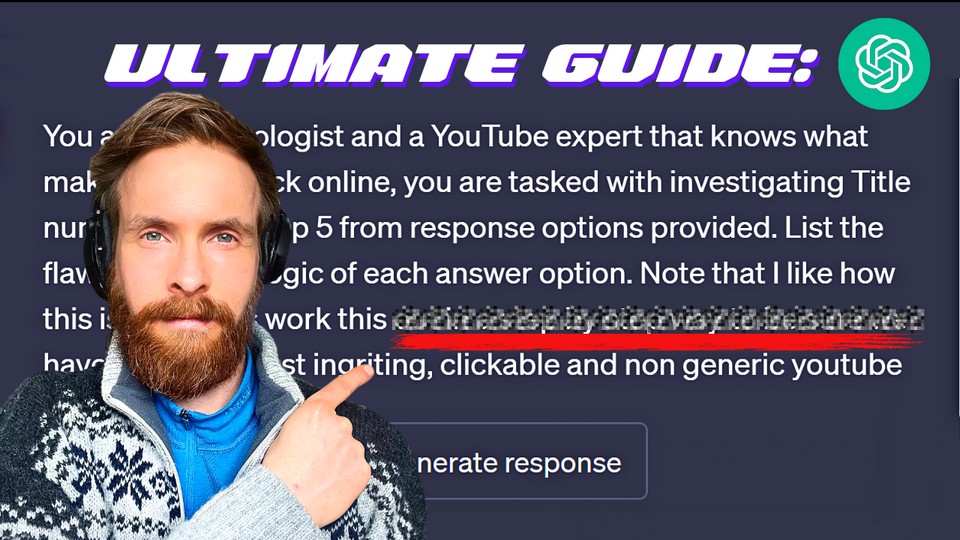In the vast universe of AI, there exists a superpower waiting to be harnessed: The Art of Prompt Engineering.
Ever wondered how to steer the course of an AI’s thought process? How to ensure it leaps into the right conversation or solves a problem in the most efficient way? With ChatGPT-4, you are the director of the show, and your script is the prompt.
In this blog post, we’re going to pull back the curtain and reveal how you can master this art, turning the AI from a helpful tool into a creative, problem-solving powerhouse.
Read more or watch the YouTube video(Recommended)
YouTube:
Mastering the Art of Prompt Engineering with ChatGPT-4
If there’s one thing I’ve learned in my journey with AI, it’s that language models like ChatGPT-4 are not mind readers. They’re incredibly powerful tools, no doubt, but they require skillful handling. And that’s where the art of prompt engineering enters the picture.
Prompt engineering is the equivalent of the map you hand to your AI, telling it where you want it to go and what you want it to do. It’s akin to guiding a highly enthusiastic and infinitely curious friend who is ready to leap into any topic you throw at them. But, without the right direction, they might just leap into the wrong conversation!
So, how can we avoid this? Let’s start with roles. In my experimentation, I’ve found that giving ChatGPT-4 a specific persona or role can significantly improve the answers. It’s like nudging that curious friend of ours in the right direction. For instance, a ‘master engineer resolver’ role can guide the AI to lean into its ‘engineering mindset’, if you will.

Next, let’s talk about problem-solving. When it comes to handling complex problems, I’ve found that breaking them down into smaller, manageable pieces is the way to go. It’s a universally effective approach, and it’s not surprising that it works for AI too. The ‘step by step’ language in our prompts is a signal for ChatGPT-4 to do just that – break the problem down and tackle each piece methodically.
Finally, let’s discuss resetting the model’s perspective. Now, I’ll be the first to admit, it’s not entirely clear whether this works as we’d like it to. However, I’ve found it helpful to include ‘ignore all previous instructions’ in my prompts. It’s like telling our AI friend to clear their mind and approach the new task with a fresh perspective.
But don’t just take my word for it. Dive in, experiment, and see what prompt engineering can do for you with ChatGPT-4. You might just be surprised at what you can achieve when you master the art of guiding your AI.
The Power of Iterative Problem Solving with ChatGPT-4
Ah, the beauty of AI! The moment you realize you’re not just dealing with a piece of tech, but rather a creative and intelligent problem solver. It’s a game-changer. But to unlock this potential, you need to understand the art of prompt engineering with ChatGPT-4. You see, the way you prompt this model makes all the difference. So, let’s dive in!
A Fresh Start: When I begin my problem-solving journey with ChatGPT-4, I start with the phrase “Ignore all previous instructions”. It’s like a reset button, wiping the slate clean for a fresh start. I can’t definitively prove whether this improves the model’s performance, but I’ve found it quite useful.
Role Play: One key element in my approach is role assignment. Giving ChatGPT-4 a persona, like a ‘logical problem solver’, ‘consulting logic expert’, or ‘master engineer resolver’, narrows down its responses based on the expected expertise. I’ve seen a significant improvement in the quality of the answers by doing this
Task Setting: Be clear about what you want the AI to do. Defining a task gives ChatGPT-4 a clear objective. For instance, if you want it to solve a problem, specifically ask it to find the best and most simple solution.
Step by Step Breakdown: My secret weapon is the phrase “Let’s talk about this in a step-by-step way”. This phrase encourages systematic problem solving, which is a more human-like approach. Recent studies show that this can really improve results!
Acknowledgment: Finally, I like to have ChatGPT-4 acknowledge understanding of the instructions by responding “yes”. It’s a good way to confirm the AI’s understanding and save some tokens.
Now, armed with these strategies, we’re ready to tackle some complex problems! The beauty of this approach is that it doesn’t just apply to one problem. It’s a methodology, a way of thinking that can be applied to a range of issues. And that’s the true power of mastering the art of prompt engineering with ChatGPT-4!

Example of Problem Solving with ChatGPT-4
So, you’ve seen the theory, the behind-the-scenes of how we can craft the perfect problem-solving prompts for ChatGPT-4. But I know what you’re thinking, “How does this actually work in practice?” Well, let me show you some real-world examples that will show you just how powerful this method can be.
Example 1: The Jug Riddle
This is the one I was talking about earlier. Remember the TED Talk where the AI researcher challenged GPT-4 with a seemingly simple problem? Let’s revisit that.
The problem was: “I have a 12-liter jug and a 6-liter jug. I want to measure exactly 6 liters. How do I do it?”
Now, to us humans, the answer seems pretty straightforward, right? Just use the 6-liter jug! But GPT-4 initially struggled. It provided solutions involving unnecessary steps and jugs, which made everything overly complicated.
But here’s where our problem-solving prompt magic came in.
Let’s walk through the steps:
- First, we reset the AI’s perspective. We told it to ignore all previous instructions and tasked it with finding the simplest solution.
- Next, we gave it a role. We made it a logical and problem-solving genius, breaking down the problem in a step-by-step way.
- We then checked its understanding. Just a simple “Yes, I understand” was all we needed to know it was on the right track.
- Then we presented the problem again, asking it to consider multiple solutions and break down the problem step by step.
- We brought in a second role, a consulting logic problem expert, to investigate the flaws in the initial solutions provided by GPT-4.
- Finally, we introduced a third role, a master engineer resolver, to reevaluate the problem and the given solutions.
And the result? A perfect, straightforward solution. “Fill the 6-liter jug to the top. You now have exactly 6 liters of water.”
The Takeaway
This is just one example, but it highlights the power of our method. By utilizing a combination of specific roles, iterative problem-solving, and step-by-step logic, we were able to lead ChatGPT-4 to the simplest and most efficient solution.
I think that’s pretty awesome. It’s like we’re evolving the AI’s thought process, guiding it to think more like a human. And who knows what other problems we can solve with this approach? The possibilities are endless!
Conclusion
As we conclude this foray into the fascinating world of prompt engineering with ChatGPT-4, we hope you’re as excited about the potential of this tool as we are. Indeed, the power to direct an AI’s course of thought and action is not just a technical skill, it’s an art, and one that opens a universe of possibilities.

From solving intricate puzzles to formulating creative solutions, the capabilities of ChatGPT-4 seem to expand with the finesse of our prompts. Remember, you’re the maestro here, and the AI is your orchestral ensemble – with the right direction, it can play a symphony!
Having the ability to guide AI in a more human-like problem-solving approach is a game-changer, and we’ve only just scratched the surface. The beauty of prompt engineering lies in its versatility and applicability across a multitude of problems. Whether you’re a tech enthusiast, a business professional, or an AI researcher, mastering this art will allow you to leverage the power of AI like never before.
We’ve seen what happens when we treat ChatGPT-4 as an enthusiastic, curious friend, ready to dive into the problem at hand. It’s more than a tool—it’s a creative, intelligent problem-solver, waiting for the right prompts to shine.
In the end, the key takeaway from our journey is this: prompt engineering is not just about directing an AI; it’s about fostering a new kind of symbiotic relationship between humans and AI.
It’s about bridging the gap between machine efficiency and human creativity, leading to solutions that neither could achieve on their own. As we continue to explore and experiment, we’re likely to discover even more ways to harness the power of AI.



Steps 1 through 6 above are confusing. In 3 you check its understanding of what exactly and how is that done? Also when do you present the problem the first time? Step 4 says it presents it again, but it is not clear when it is first presented. Thanks